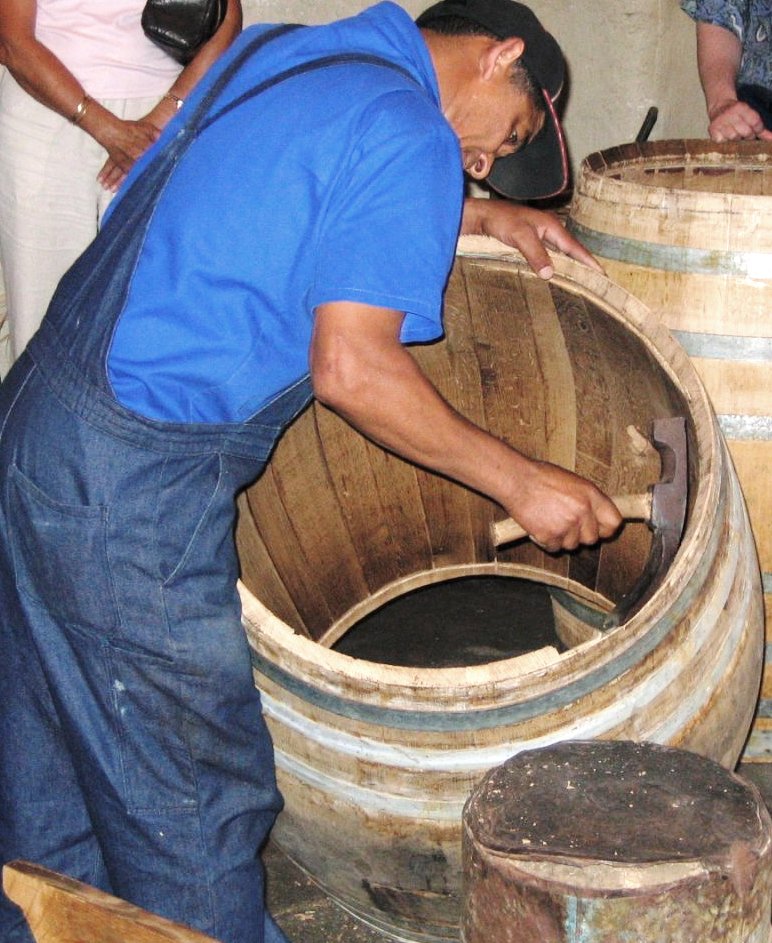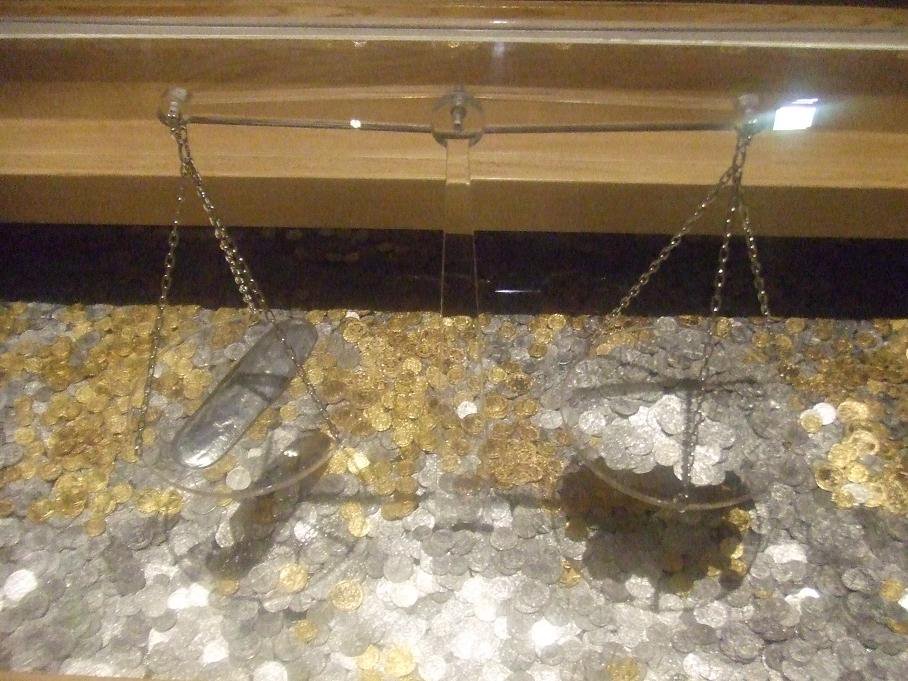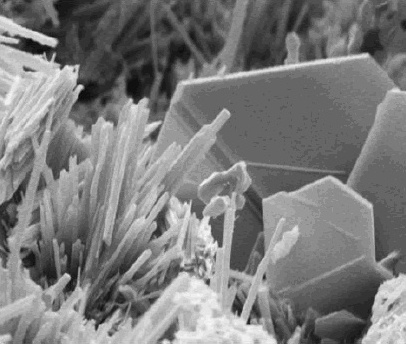|
St Rollox Chemical Works
St Rollox Chemical Works was an industrial manufacturer of chemicals located in Glasgow, Scotland, that began in 1799 and operated continuously until 1964. It was created by Scottish industrialist Charles Tennant and owned and operated by his family and descendants. It was described as the largest plant in Europe, if not the world. Formation In 1787, Tennant attended a demonstration of Claude Louis Berthollet's chlorine bleaching process that was held by Watt in Birmingham. Tennant adapted the bleaching process by substituting Lime (material), lime for potash, solving the problem of lime's inability to form a solution in water and opening the way to produce bleach. He received a patent No. 2209 on 23 January 1798 for the manufacture of a bleaching liquor by passing chlorine into a well-agitated mixture of lime and water. The new process reduced both the cost of the bleaching liquor and reduced the damage caused by the liquor to the cloth. The new liquid had a short shelf-life, ... [...More Info...] [...Related Items...] OR: [Wikipedia] [Google] [Baidu] |
Bleach
Bleach is the generic name for any chemical product that is used industrially or domestically to remove color from (i.e. to whiten) fabric or fiber (in a process called bleaching) or to disinfect after cleaning. It often refers specifically to a dilute solution of sodium hypochlorite, also called "liquid bleach". Many bleaches have broad-spectrum bactericidal properties, making them useful for disinfecting and sterilizing. They are used in swimming pool sanitation to control bacteria, viruses, and algae and in many places where sterile conditions are required. They are also used in many industrial processes, notably in the bleaching of wood pulp. Bleaches also have other minor uses, like removing mildew, killing weeds, and increasing the longevity of cut flowers. Bleaches work by reacting with many colored organic compounds, such as natural pigments, and turning them into colorless ones. While most bleaches are oxidizing agents (chemicals that can remove electrons from ot ... [...More Info...] [...Related Items...] OR: [Wikipedia] [Google] [Baidu] |
Ironstone
Ironstone is a sedimentary rock, either deposited directly as a ferruginous sediment or created by chemical replacement, that contains a substantial proportion of an iron ore compound from which iron (Fe) can be smelted commercially. Not to be confused with native or telluric iron, which is very rare and found in metallic form, the term ''ironstone'' is customarily restricted to hard, coarsely banded, non-banded, and non-cherty sedimentary rocks of Phanerozoic, post-Precambrian age. The Precambrian deposits, which have a different origin, are generally known as banded iron formations. The iron minerals comprising ironstones can consist either of oxides, i.e. limonite, hematite, and magnetite; carbonates, i.e. siderite; silicates, i.e. chamosite; or some combination of these minerals.U.S. Bureau of Mines Staff (1996) ''Dictionary of Mining, Mineral, & Related Terms.'' Report SP-96-1, U.S. Department of Interior, U.S. Bureau of Mines, Washington, D.C.Neuendorf, K. K. E., J. P. Mehl ... [...More Info...] [...Related Items...] OR: [Wikipedia] [Google] [Baidu] |
Solvay Process
The Solvay process or ammonia–soda process is the major industrial process for the production of sodium carbonate (soda ash, Na2CO3). The ammonia–soda process was developed into its modern form by the Belgian chemist Ernest Solvay during the 1860s. The ingredients for this are readily available and inexpensive: salt brine (from inland sources or from the sea) and limestone (from quarries). The worldwide production of soda ash in 2005 was estimated at 42 million tonnes,Kostick, Dennis (2006)"Soda Ash" chapter in ''2005 Minerals Yearbook,'' United States Geological Survey. See Table I. which is more than six kilograms () per year for each person on Earth. Solvay-based chemical plants now produce roughly three-quarters of this supply, with the remaining being mined from natural deposits. This method superseded the Leblanc process. History The name "soda ash" is based on the principal historical method of obtaining alkali, which was by using water to extract it from the ashe ... [...More Info...] [...Related Items...] OR: [Wikipedia] [Google] [Baidu] |
Cooper (profession)
A cooper is a craftsman who produces wooden casks, barrels, vats, buckets, tubs, troughs, and other similar containers from timber staves that were usually heated or steamed to make them pliable. Journeymen coopers also traditionally made wooden implements, such as rakes and wooden-bladed shovels. In addition to wood, other materials, such as iron, were used in the manufacturing process. The trade is the origin of the surname Cooper. Etymology The word "cooper" is derived from Middle Dutch or Middle Low German ''kūper'' 'cooper' from ''kūpe'' 'cask', in turn from Latin ''cupa'' 'tun, barrel'. The word was adopted in England as an occupational surname, Cooper. The art and skill of ''coopering'' refers to the manufacture of wooden casks, or barrels. The facility in which casks are made is referred to as a cooperage. History Traditionally, a cooper is someone who makes wooden, staved vessels, held together with wooden or metal hoops and possessing flat ends or he ... [...More Info...] [...Related Items...] OR: [Wikipedia] [Google] [Baidu] |
Platinum
Platinum is a chemical element; it has Symbol (chemistry), symbol Pt and atomic number 78. It is a density, dense, malleable, ductility, ductile, highly unreactive, precious metal, precious, silverish-white transition metal. Its name originates from Spanish language, Spanish , a diminutive of "silver". Platinum is a member of the platinum group of elements and group 10 element, group 10 of the periodic table of elements. It has six naturally occurring isotopes. It is one of the Abundance of elements in Earth's crust, rarer elements in Earth's crust, with an average abundance of approximately 5 microgram, μg/kg, making platinum about 30 times rarer than gold. It occurs in some nickel and copper ores along with some Native element mineral, native deposits, with 90% of current production from deposits across Russia's Ural Mountains, Colombia, the Sudbury Basin, Sudbury basin of Canada, and a large reserve in South Africa. Because of its scarcity in Earth's crust, only a f ... [...More Info...] [...Related Items...] OR: [Wikipedia] [Google] [Baidu] |
Sodium Sulfate
Sodium sulfate (also known as sodium sulphate or sulfate of soda) is the inorganic compound with formula Na2SO4 as well as several related hydrates. All forms are white solids that are highly soluble in water. With an annual production of 6 million tonnes, the decahydrate is a major commodity chemical product. It is mainly used as a filler in the manufacture of powdered home laundry detergents and in the Kraft process of paper pulping for making highly alkaline sulfides. Forms *Anhydrous sodium sulfate, known as the rare mineral thénardite, used as a drying agent in organic synthesis. *Heptahydrate sodium sulfate, a very rare form. *Decahydrate sodium sulfate, known as the mineral mirabilite, widely used by chemical industry. It is also known as Glauber's salt. History The decahydrate of sodium sulfate is known as Glauber's salt after the Netherlands, Dutch–Germany, German chemist and apothecary Johann Rudolf Glauber (1604–1670), who discovered it in Austrian spring water i ... [...More Info...] [...Related Items...] OR: [Wikipedia] [Google] [Baidu] |
Leblanc Process
The Leblanc process was an early industrial process for making ''soda ash'' ( sodium carbonate) used throughout the 19th century, named after its inventor, Nicolas Leblanc. It involved two stages: making sodium sulfate from sodium chloride, followed by reacting the sodium sulfate with coal and calcium carbonate to make sodium carbonate. The process gradually became obsolete after the development of the Solvay process. Background Soda ash ( sodium carbonate) and potash ( potassium carbonate), collectively termed ''alkali'', are vital chemicals in the glass, textile, soap, and paper industries. The traditional source of alkali in western Europe had been potash obtained from wood ashes. However, by the 13th century, deforestation had rendered this means of production uneconomical, and alkali had to be imported. Potash was imported from North America, Scandinavia, and Russia, where large forests still stood. Soda ash was imported from Spain and the Canary Islands, where it w ... [...More Info...] [...Related Items...] OR: [Wikipedia] [Google] [Baidu] |
Sodium Carbonate
Sodium carbonate (also known as washing soda, soda ash, sal soda, and soda crystals) is the inorganic compound with the formula and its various hydrates. All forms are white, odourless, water-soluble salts that yield alkaline solutions in water. Historically, it was extracted from the ashes of plants grown in sodium-rich soils, and because the ashes of these sodium-rich plants were noticeably different from ashes of wood (once used to produce potash), sodium carbonate became known as "soda ash". It is produced in large quantities from sodium chloride and limestone by the Solvay process, as well as by carbonating sodium hydroxide which is made using the chloralkali process. Hydrates Sodium carbonate is obtained as three hydrates and as the anhydrous salt: * sodium carbonate decahydrate ( natron), Na2CO3·10H2O, which readily effloresces to form the monohydrate. * sodium carbonate heptahydrate (not known in mineral form), Na2CO3·7H2O. * sodium carbonate monohydrate ( thermonatr ... [...More Info...] [...Related Items...] OR: [Wikipedia] [Google] [Baidu] |
Salt Tax
A salt tax refers to the direct taxation of salt, usually levied proportionately to the volume of salt purchased. The taxation of salt dates as far back as 300 BC, as salt has been a valuable good used for gifts and religious offerings since 6050 BC. As a result of the successful profitability of the salt tax, its use would diffuse among governments across the world. France, Spain, Russia, England, and India were the main regions to follow the Chinese lead. Salt was used as a currency during the Roman Empire, and towards the end of their reign the Romans began monopolising salt in order to fund their war objectives. Salt was such an important commodity during the Middle Ages that salt production facilities became some of the first state-owned enterprises. Salt is one of the longest standing sources of revenue for governments; the taxation policy was so successful due to the vital role of salt within the human diet. Salt taxes have been extremely influential in many of the politica ... [...More Info...] [...Related Items...] OR: [Wikipedia] [Google] [Baidu] |
Pound (mass)
The pound or pound-mass is a unit of mass used in both the British imperial and United States customary systems of measurement. Various definitions have been used; the most common today is the international avoirdupois pound, which is legally defined as exactly , and which is divided into 16 avoirdupois ounces. The international standard symbol for the avoirdupois pound is lb; an alternative symbol (when there might otherwise be a risk of confusion with the pound-force) is lbm (for most pound definitions), # ( chiefly in the U.S.), and or ̶ (specifically for the apothecaries' pound). The unit is descended from the Roman (hence the symbol ''lb'', descended from the scribal abbreviation, '). The English word ''pound'' comes from the Roman ('the weight measured in '), and is cognate with, among others, German , Dutch , and Swedish . These units are now designated as historical and are no longer in common usage, being replaced by the metric system. Usage of the un ... [...More Info...] [...Related Items...] OR: [Wikipedia] [Google] [Baidu] |
Salt
In common usage, salt is a mineral composed primarily of sodium chloride (NaCl). When used in food, especially in granulated form, it is more formally called table salt. In the form of a natural crystalline mineral, salt is also known as rock salt or halite. Salt is essential for life in general (being the source of the essential dietary minerals sodium and chlorine), and saltiness is one of the basic human tastes. Salt is one of the oldest and most ubiquitous food seasonings, and is known to uniformly improve the taste perception of food. Salting, brining, and pickling are ancient and important methods of food preservation. Some of the earliest evidence of salt processing dates to around 6000 BC, when people living in the area of present-day Romania boiled spring water to extract salts; a salt works in China dates to approximately the same period. Salt was prized by the ancient Hebrews, Greeks, Romans, Byzantines, Hittites, Egyptians, and Indians. Salt became a ... [...More Info...] [...Related Items...] OR: [Wikipedia] [Google] [Baidu] |
Calcium Hydroxide
Calcium hydroxide (traditionally called slaked lime) is an inorganic compound with the chemical formula Ca( OH)2. It is a colorless crystal or white powder and is produced when quicklime ( calcium oxide) is mixed with water. Annually, approximately 125 million tons of calcium hydroxide are produced worldwide. Calcium hydroxide has many names including hydrated lime, caustic lime, builders' lime, slaked lime, cal, and pickling lime. Calcium hydroxide is used in many applications, including food preparation, where it has been identified as E number E526. Limewater, also called milk of lime, is the common name for a saturated solution of calcium hydroxide. Solubility Calcium hydroxide is moderately soluble in water, as seen for many dihydroxides. Its solubility increases from 0.66 g/L at 100 °C to 1.89 g/L at 0 °C. Its solubility product ''K''sp of 5.02 at 25 °C, its dissociation in water is large enough that its solutions are basic according to the following ... [...More Info...] [...Related Items...] OR: [Wikipedia] [Google] [Baidu] |









